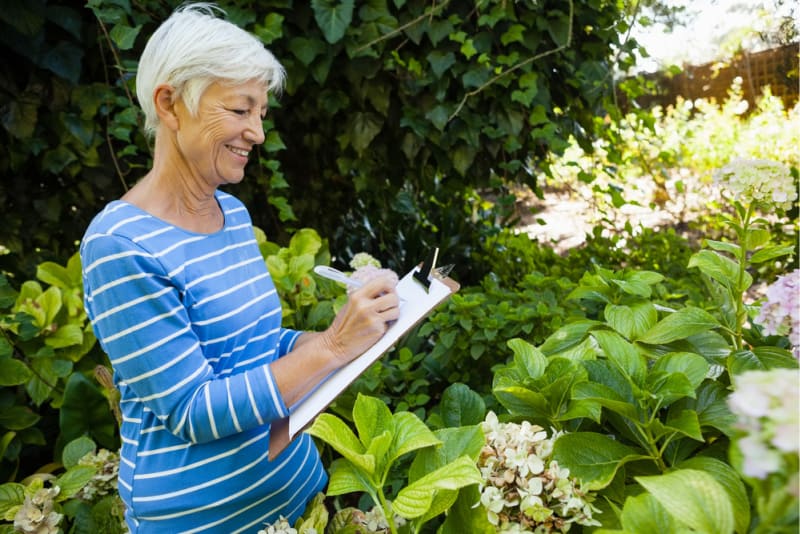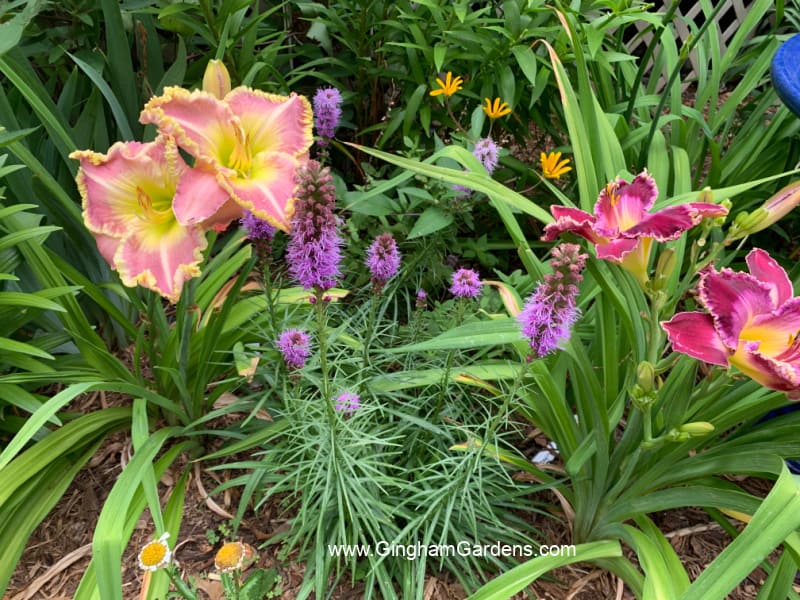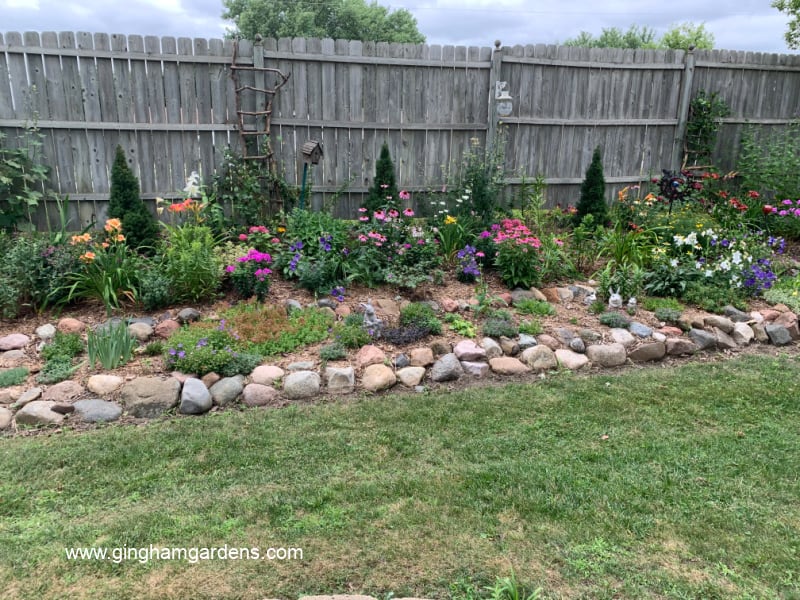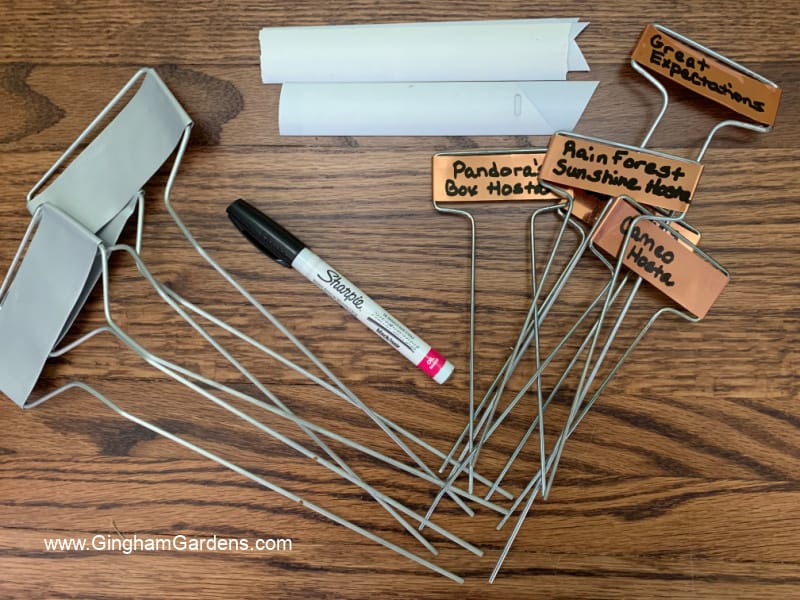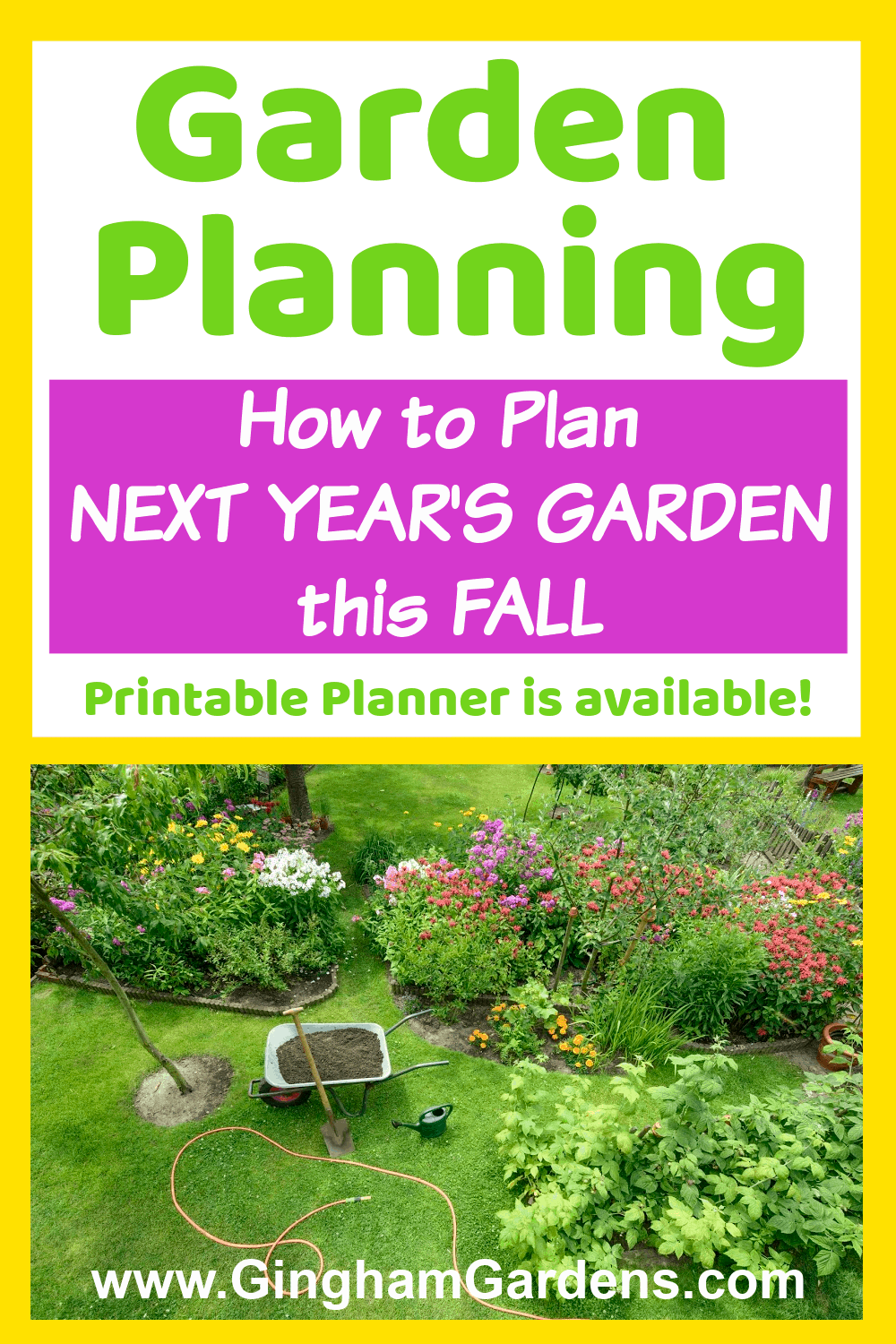Garden Planning – How to Plan Next Year’s Gardens
One of the first rules of garden planning and design is to visualize the future. Try to picture when your garden(s) will be full and the plants mature. But, if you’re actually planning next year’s garden when the garden is at its peak, then you don’t have to visualize at all. It’s just so much easier to plan when you can see everything right before your eyes. What better time to plan out your flower beds and vegetable gardens for next year than right now when the plants are at their peak.
You think you can remember what worked and what didn’t in your gardens from one growing season to the next. But, trust me, you can’t. Lots can happen in that 6 – 7 month time stretch. When you get out to your gardens in the spring, there’s so much to do and after a long winter you’re so excited to be back out in your gardens. This is where a little planning can go a long way.
The more planning you can do now, the better your gardens will be next year. Not only are your gardens fresh in your mind, you can visually see them. I realize when your gardens are at their peak, there are tons of chores, watering, weeding, watering, weeding… You get the picture. That’s all the more reason to take a break from the chores, walk around with a clipboard and make notes of what worked and what did not. Late summer and fall really is the best time to plan your garden(s) for next year and it doesn’t take a lot of time. This is true for new gardeners, old gardeners and all those in between.
This post contains affiliate links. If you click on
one of the links and make a purchase, I may receive a small commission
at no additional cost to you. See full disclosure here.
Creating a Garden Map
Unless you do all your flower gardening in square or rectangle shaped beds, it will take a little work to get your garden map just right. Basically you want to be able to get an idea of the shape and size of your garden beds, if you have more than one.
If you have the time, I would suggest taking a day and mapping out your entire yard, as much to scale as possible. If your yard is fenced in, although not 100 percent accurate, measuring can become a little easier by counting fence panels. For instance, our back yard is surrounded by a privacy fence and each panel is 8 feet long. Or, if you can afford it consider having a landscape architect or designer do it for you. There are lots of garden design apps, but I personally haven’t found one that wasn’t more of a pain than it’s worth.
This step is made so much easier if you have a survey or plat map of your property. Sometimes plats are provided when you purchase your home. Or, you can obtain a plat from your local county government office. I was able to get a plat map of our property simply by googling, “how to obtain a plat map of my property.”
Another option to creating a garden map is to use Google Maps. This only works if you don’t have lots of mature trees in your yard, so for me it wasn’t all that helpful. If you’re interested in learning more, check out this article when you’ve finished up here.
Don’t get too hung up on this step of garden mapping. Although, it’s nice to have for an overall picture, it’s totally not necessary to plan out next year’s gardens.
To help you plan, I’ve created a PDF printable Workbook/Guide,
which includes all the information in this
Garden Planning article. PLUS, this Garden Planning Guide includes
all the graphs, templates, charts and checklists you need to plan
your garden for next year. As an added bonus,
you will receive an early release of the
Gingham Gardens 2023 gardening calendar.
The Garden Planning Guide & Workbook is
available for the low price of $10.00.
Simply click the button below and follow the instructions.
(Be sure to check the box to receive free updates to the Guide.)

Planning Your Flower Gardens for Next Year
Grab a clipboard, or the printables referenced above, and let’s head outside. Go through one flower bed or area at a time and take notes. Here’s what you need to assess:
- Are there perennials that are floppy and need to be divided.
- Do you have any perennials that have reached their full grown height, but can’t be seen because there’s a plant in front of it that is taller.
- Look to see if there are plants that you just don’t really like, that you want to get rid of.
- Are there perennials that bloom for 10 days or shorter and then just look ugly the rest of the season? Consider whether you want to get rid of those plants.
- This is a good time to look and see if you have any garden thugs that need to go. Garden thugs are plants that take over and crowd out other plants.
- Are there empty spots that need to be filled.
- Is there a combination of plants, or an area in your garden that looks stunning? Perhaps you want to plan to repeat that planting in a different area of your flower bed. Learn more about how to create stunning color combinations in your garden.
- Assess plants that aren’t doing great. Are they getting enough sun, or too much sun? Does the soil need to be amended?
- Are there perennial plants in your garden that have a long bloom time? Add their names to a plant list so you can purchase more next spring, or even on clearance now.
- Is there a particular perennial or annual flower that you’d like to have more of? As you deadhead those plants, be sure to collect some seeds.
Now it’s time to think back a bit. Were there periods in the past few months when there wasn’t much color happening. Take some time to do a little research and add plants that bloom during that time. For me, it’s late spring/early summer right after the irises finish up. Do you need to add some spring and summer blooming bulbs to take your garden to a 3-season garden?
Garden Planning – Do You Need Lower Maintenance
Do you need to lower the maintenance of a large flower bed? Consider adding low maintenance evergreens or other shrubs to the flower bed. For instance, I have a huge, hot mess of a garden that is on a slope and as I age it’s going to be more difficult to take care of the garden safely. So, I’m slowly working on it to make it a lower maintenance garden. This year I added some dwarf Alberta spruce trees along the top. I also planted some hydrangeas. My plan is to add more flowering shrubs. I will always have perennials in this bed, but my plan is to move some of the plants that reseed and are high maintenance.
So, now is a great time to plan out the changes that need to be made to this flower bed. This post – Creating and Maintaining a Low Maintenance Garden is a good read, if you need help going low maintenance.
Garden Planning – Mark Your Plants
Take time now to mark your plants. Late Summer or Fall is a good time to add (or replace) plant tags to identify the various plants in your gardens. It’s kind of a garden geeky thing to do, but I love having my plants marked. I like trying new plants and sometimes it’s difficult to remember the names. I find this especially true in my shade gardens.
Also, I like to know what plants I have and using plant markers is a great way to accomplish this. Plant markers are imperative for plants that are notorious late arrivers in spring. Take for instance, balloon flowers. I used to say I can’t grow balloon flowers, they never survive our winters. That is until I learned they are just sleepy plants and late to arrive at the spring garden party. Hardy Hibiscus and Blanket Flower are other plants that are late to show in the spring.
If you are going to the trouble of marking your plants, be sure to use paint markers and not permanent markers, because they fade. I like to use old mini blinds cut up for most my plants, but for my special plants like daylilies and hostas, I love these plant tags and these too.
Garden Planning for Vegetable Gardens
Assess what vegetables did great and plan to add more of those next year. Or, what your family’s favorite vegetables are and plant more of those. Make notes now so that when those seed catalogs start arriving in winter, you’ll know what to order.
Do you have veggies that just take up space that your family doesn’t really like. For us, it’s lettuce. We love and eat lots of salads, so I’m determined to grow lettuce every year and I dedicate space in my small veggie patch, but we just don’t care for it all that much. So next year I’m making a note to pass on lettuce, or to try different varieties.
Maybe there was something that didn’t fare so well. For me that is broccoli. We love broccoli and we eat it several times a week, so I would love to grow a viable crop in my gardens. Next year, I know I need to get it planted way earlier, because its a cool season crop, even before the danger of frost has passed. And, I need to use row covers to keep cabbage moths from laying eggs.
Map out your veggie garden and note where your veggies are planted. Be sure to put the year on your map. Keep this garden map in your garden planner for crop rotation the following year.
Other things to assess in your vegetable gardens and to help the planning process:
- Do you want to grow more of your own food? How much space do you have? Is it enough?
- How were your crop yields? Do you need to fertilize more, or add some compost or organic matter?
- Do you need to plant cool-season crops (leafy greens, broccoli, peas, etc.) earlier? (Yes, I do.)
- Do you want to jumpstart your gardening season in early spring by adding a portable greenhouse or a few cold frames? You can also extend your season with these items.
Planning Container Gardens
Do you have lots of containers, or just a few? Either way, you’ll have better success next year, if you go through and assess both your veggie containers and flower pots.
Assess your container gardens:
- Did you have a flower combination that you loved? If so, take a picture and make note of it.
- Were your container gardens a bust this year? Assess what when wrong and write it down.
- Did watering your containers become too much of a chore that was hard to keep up with? Consider adding a drip line system next year.
- Were there veggies that did great in containers (remember with veggies, the bigger the container, the better). For instance, I have container grown cucumbers, tomatoes, zucchini, peppers and herbs that have done wonderful in containers. I also have cauliflower and red cabbage that are not enjoying their containers at all. If I try them again next year, I will use bigger containers for them, so I will make note of that in my planner.
Planning a New Garden Bed
Mid to Late Summer and Fall are the best times to lay the groundwork for planning a new garden bed. I cover this in the article – How to Convert Lawn to Gardening Space. If you take these steps now and plan ahead, you’ll be rewarded with a blank slate to start planting next spring.
More Tips for Garden Planning
Did you have a particular pest(s) problem? Because I don’t have time and like to minimize chemical use in my gardens, I don’t worry too much about pests, unless they are going to kill my veggies or flowers. There are measures you can take to minimize the invasion of certain pests the following year. I won’t go into all of the things to assess with pest problems in this post, but do your research. Make notes for next year, so the pest problem can be minimized or eradicated.
Another awesome reason to plan next year’s gardens during peak season this year is end of season clearance sales. If you plan and know what you’re looking for, you can get some fantastic deals on trees, shrubs, evergreens and perennials.
As you’re going through your gardens making a plan, carry your phone with you and snap some pictures as you go. First of all it’s just so great to have pictures of your gardens to refer back to. It’s an awesome way to compare your gardens from year-to-year and see how they’ve evolved.
Now, it’s great you have a plan written down. You can either start digging in this fall when the temps start to cool down, or you’ll be ready to go next spring.
Garden Planning in the Winter
So what if you didn’t have time to plan your gardens at the end of summer or fall? No worries, you can still utilize the resources and tips in this post to plan your garden(s) in the middle of winter. Putting all distractions aside, pull out your graph paper, or the printable booklet, as well as your garden pictures from the previous season. It helps to go through your garden pictures and organize them by season and area. You can do this by creating folders on your desktop, or whatever photo organization method works for you.
Go ahead and make plans and sketches using your memory, your garden photos and your graph paper. Using the list above (or the printable booklet), just go for it. Although the plans won’t be perfect, you’ll get a head start on your spring gardening season. Plus, it sure helps to ward off the winter doldrums when you can think about your gardens in the winter.
Garden Planning PDF printable Workbook/Guide,
which includes all the information in this
Garden Planning article. PLUS, this Garden Planning Guide includes
all the graphs, templates, charts and checklists you need to plan
your garden for next year. As an added bonus,
you will receive an early release of the
Gingham Gardens 2023 gardening calendar.
The Garden Planning Guide & Workbook is
available for the low price of $10.00.
Simply click the button below and follow the instructions.
(Be sure to check the box to receive free updates to the Guide.)

Whether you have a large garden, a small garden or lots of garden space, you’ll be so glad you took the time to plan them out. I hope you’ve learned how to go about garden planning and how to plan next year’s garden this summer or fall. Just think, next spring you’ll be able to refer to your notes from last year, have a good plan in place and be ready to go come planting time.
Do you have questions or comments, be sure to leave those below. I’d love to hear from you.
Happy gardening,
Joanna
p.s. Hey did you know Gingham Gardens is on Pinterest. Help spread the gardening love by sharing the pins below to your favorite gardening board. We’re also on Facebook, stop by and like the page.
Pins to Share:

